2 Days Trip To Amritsar : Golden Temple, Jallianwala Bagh, and More
Amritsar Sightseeing Tour - 2 Days Tour With Guide
Day 1
Stop 1: The Golden Temple
To start your day with positivity, we recommend beginning your travel in Amritsar with a visit to the holy Harmandir Sahib. “Harmandir” literally means “the House of God”. Since it is open 24 hours, you can reach as early as 7 am so you are able to spend some time there and have a taste of the delicious breakfast langar (meal).

Even though the place always had a peaceful atmosphere within, the structure was not always this beautiful. It was rebuilt multiple times by the Sikhs as it was repeatedly destroyed by the ruling Mughals. However, Maharaja Ranjit Singh built the place with marble and copper in 1809 and the covered the sanctum in gold-leaf. That’s when it came to be known as the “Golden Temple”. It was renovated by Indian government with around 500 kgs of gold and it took about 5 years to complete the process.
Although it is one of the most sacred sites for the followers of Sikhism, the Gurudwara is open for all faiths and religions. It promotes a message of unity and peace. After paying your respects and getting blessings from the Granthi (priest in Gurudwara) and the God, you can then move to your next stop for the day.
Stop 2: Jallianwala Bagh
Since it is only about 600 m from the Golden Temple, you can reach the place by 10 am. The Jallianwala Bagh massacre happened on 13th April 1919, and the dreadful memories have been stored within the country’s heart since then.
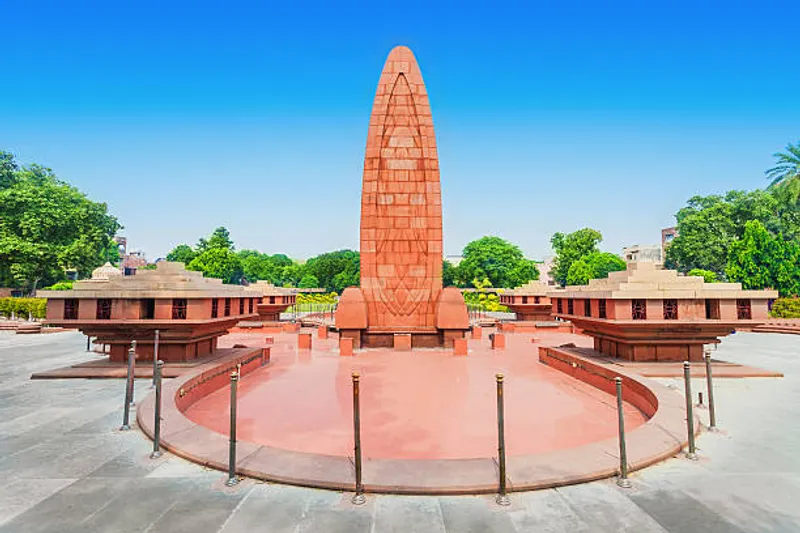
Many Indians had gathered in the garden to celebrate the festival of Baisakhi. In the midst of celebrations, British soldiers started an open fire on the innocent and unarmed people while blocking the only entrance to the place. Since there was no way to escape, many chose to jump into the well to escape from the bullets. You can still see the Martyr’s Well and the marks of bullets on many walls. Most of us would have watched a recreated version of the incident on television; but imagining all this while you are actually there takes you back in time.
Entry to the garden is free and it is open from 6.30 AM till 7.30 PM. A memorial was built here in 1951 and the garden has been opened to public long back.
After experiencing one of the most talked about events in the history of India, let’s move on to our next destination: the famous Wagah border.
Stop 3: Wagah Border
This is one place you would not want to miss. One can easily get a bus or a taxi from wherever they are in Amritsar to the Wagah border, which is around 30 kms from the city.
The Beating Retreat ceremony, as it is famously known as, started in 1959 and is a treat for your patriotic inner self. It marks the rivalry as well as the brotherhood between India and Pakistan. The 45-minutes daily ritual includes parade by soldiers, playing of national anthems, lowering the national flags on both sides and closing the borders for the night.
The event attracts many tourists to the Attari-Wagah border and the place is full of music, dance and excitement at this hour of the day.
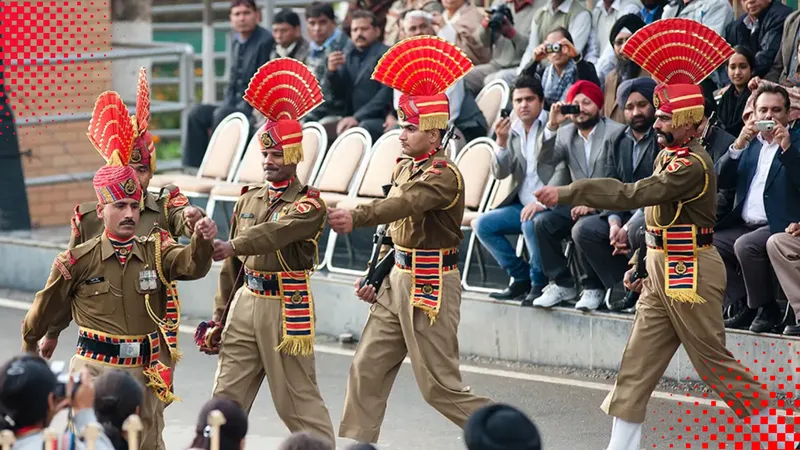
The ceremony takes place from 4:15 pm to 5:00 pm (in winters) and from 5:15 pm to 6:00 pm (in summers) and is one of the best places to visit in Amritsar. The entry is free however since the seats are reserved on first-cum first-serve basis, it is advisable to reach the border around 1 hour before it starts.
After the thrilling experience, you will definitely be hungry by the time you leave Wagah Border. It’s now time for a fulfilling and hearty Punjabi meal!
Stop 4: Shahi Qila
A day in the heart-warming city of Amritsar cannot be complete without the spicy yet irresistible Punjabi food. Shahi Qila is one of the best rated places to eat near the Attari-Wagah border and is the last restaurant of India, literally.

The taste here is authentic and affordable. You can choose to order a la carte or have your plate full with their buffet items. They serve a rich variety of snacks, main course as well as desserts. Situated adjacent to the border between India and Pakistan, it not only offers food but entertainment as well. The place has a kids’ play zone, live music (bhangra), and shopping areas as well. You get to relax, eat and shop all at one place.
Once you are done, you can call it a day and head back to the hotel in Amritsar city. The next day in Amritsar will also see you moving around a lot as there is so much more to explore!
Day 2:
Stop 1: Durgiana Temple
Design of the Durgiana Temple was inspired from the famous Golden Temple, hence it resembles the latter a lot. The striking similarities can be seen in the marble structure and gold leaf that covers the main dome. Just like Shri Harmandir Sahib, Durgiana Temple is also built in the middle of a sacred lake.

The temple is dedicated to Goddess Durga and is named after her. One can also see idols of Goddess Lakshmi as well as Lord Vishnu inside. The holy place is also referred to as Lakshmi Narayan temple, Durga Tirath as well as Sitla Mandir. While visiting the main temple, one cannot ignore the intricately carved silver doors, because of which it is also called the “Silver Temple”.
The idea of building a temple of this scale was conceived followed by its construction in 1920s. The temple is one of the most famous Hindu shrines in Amritsar and is considered to be blessed by the Hindu Goddess. Festivals like Diwali, Ram Navmi, Dussehra and Janmashtmi are celebrated at a large scale and the entire place is decorated with lights and flowers which attracts thousands of tourists from across the country. Arriving at the temple during early hours is always peaceful and you can then move ahead to the next stop in your itinerary.
Stop 2: Partition Museum
The Partition Museum is one of the must-visit historical place in Amritsar that shows real history in such detail. The year of 1947 not only saw India getting freedom from the British rule, but also witnessed some of the most painful moments in its history during the partition of India and Pakistan.
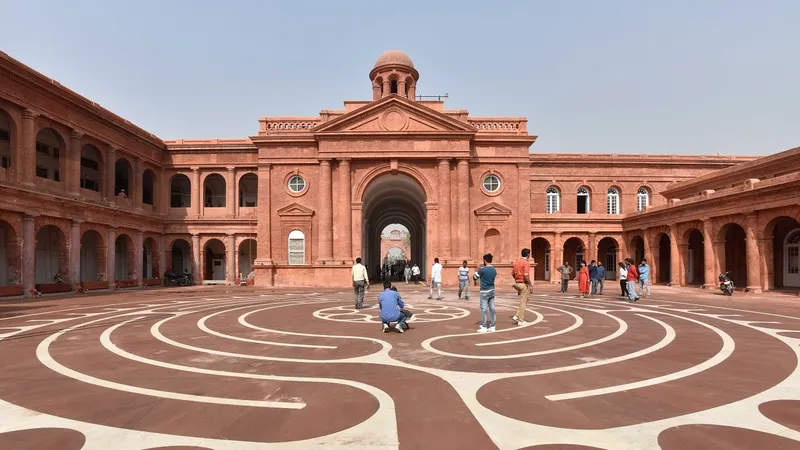
The museum is the only institution in the world dedicated to the partition of India. It contains real newspaper cuttings, important documents, artifacts as well as belongings of the partition survivors and of those who lost their lives. There was bloodshed, there was pain; many people lost their families and it is all enclosed in the walls of this museum. The actual boundary line between India and Pakistan was drawn on 17th August 1947, then known as Radcliffe line; hence the museum was opened on 17th August 2017, announcing the day as “Partition Remembrance Day”.
The stories help our present and future generations to know about the trauma our people went through. All these sufferings make people hope for peace and they can write these “hope” messages on a piece of leaf-shaped paper and hang them on the “Tree of Hope” located within the museum.
Moving on to another prominent religious place in the city, our next stop will be the Jama Masjid.
Stop 3: Khairuddin Mosque
Amritsar has majority of Sikh population, however many people from other religions also call this city their home. For many Hindus, Muslims and Christians, it is the only place they have known since years. After paying a visit to the Golden Temple and the Silver Temple, it is now time to explore one of the most beautiful mosques of the city, the Khairuddin Mosque.
Also called the Jama Masjid Khairuddin, the mosque stands as a magnificent example of the Islamic architecture. Built by Muhammad Khairuddin almost 150 years ago, in 1876, it has three domes and four minarets. The walls are carved with inscriptions and calligraphic writings. The mosque holds an important place in the history of India as it was here that Shah Attaullah Bukhari had encouraged the Indians to put up a fight against the Britishers.
The site is embellished with lights and flowers during the holy month of Ramzan that enhance its beauty. Open from 9 am till 6 pm from Monday to Sunday, it remains closed during the daily hours of Namaz.
Having covered most of the famous religious and historical spots, you can now move on to eating and shopping to lighten up the mood!
Stop 4: Bharawan Da Dhaba
You will need some energy before starting up with your shopping list, hence, we recommend having one of the best meals in the city at Bharawan Da Dhaba, the best restaurant in Amritsar, which is only 650 m from the Hall Bazaar.

Mostly famous for the Punjabi food items like dal, paneer and paranthas, the place has become a legacy. The dhaba is one of the favorite places for people wondering what to do in Amritsar, because you cannot miss the local food when in the city.
Stop 5: Hall Bazaar
Hall Bazaar is one of the oldest and most famous markets in Amritsar. The town is known for Punjabi juttis (footwear), woollen garments, handicrafts, Pashmina shawls and much more. This market has numerous shops selling variety of authentic items that you will not be able to resist!
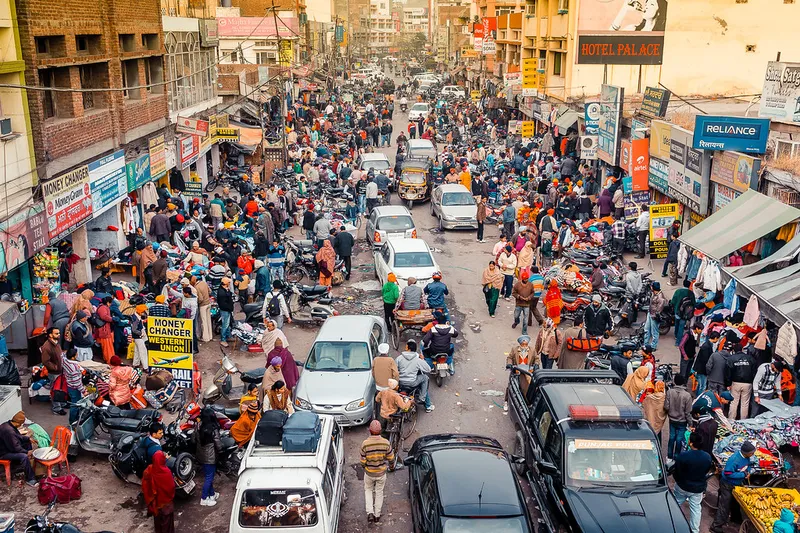
Post the shopping round comes our last destination for the day: Gobindgarh Fort.
Stop 5: Gobindgarh Fort
The Fort was initially built by Gujjar Singh Bhangi in 1760 and called “Bhagian da Qila’. But when Maharaja Ranjit Singh took it over, it was reconstructed and renamed to “Gobindgarh Fort”. It played an important role in the history of Amritsar as soldiers were deployed here to keep an eye on the enemy trying to invade Amritsar. However, it was captured by the Britishers in 1849.
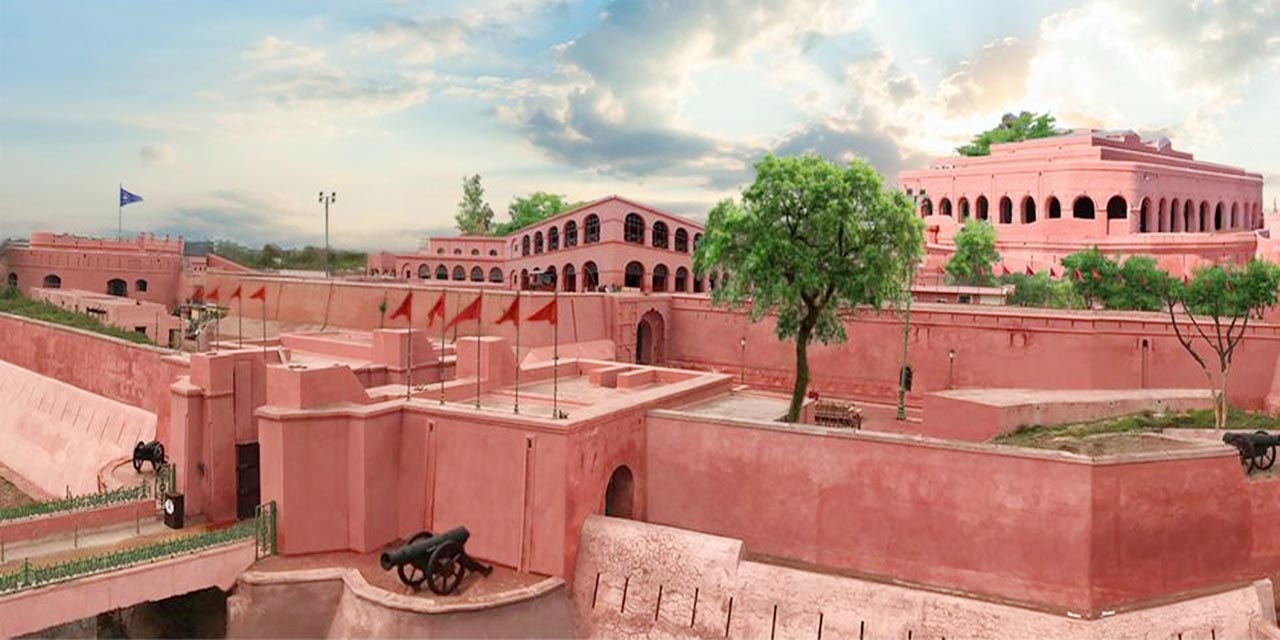
In 1947, Indian Army claimed the fort and used it for military purposes. Declared as a historical monument in 1964, the fort has a splendid architecture and has become one of the famous tourist places in Amritsar. The Toshakhana once stored the precious Kohinoor diamond and has now been made into a coin museum with antique coins on display.
The Gobindgarh fort is not only famous for its historical value, but has become a major tourist attraction with events like live performances, games, activities, food stalls, shops as well as light and sound show. You can either book a Amritsar tour package that includes all activities inside or take the entry ticket and choose which activities you want to pay for individually.
This marks the end of a quick 2-day itinerary in Amritsar, Punjab. There is much more to explore, but you will be able to cover some major tourist attractions this way. After a tiring yet fruitful day, all that is left for you to do is get some good sleep. Hope to see you back in the city sometime soon!
Get In Touch With Our Travel Expert








